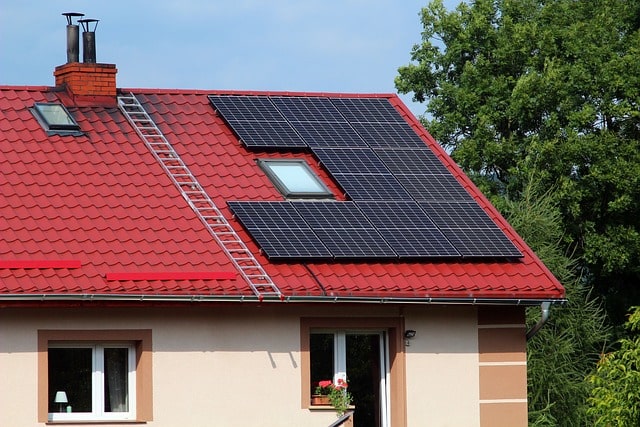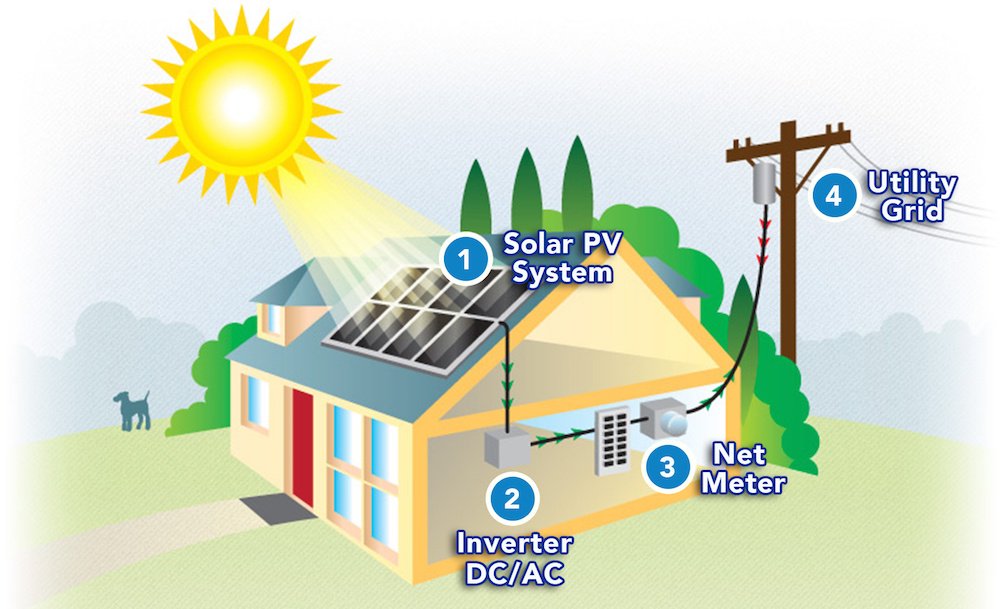With all the talk about energy storage, you may ask if a solar battery bank is necessary for residential solar systems. So how to use solar panel directly without battery on my home?
The brevity of the response is “yes.” Although there are scenarios in which having a solar battery backup is advantageous, it is not necessary for everyone.
In this post, we will examine situations in which battery storage with solar panels is advantageous, as well as situations in which simple rooftop solar panels may be the best option.

Table of Contents
How To Use Solar Panel Directly Without Battery?

If battery storage is not yet feasible, don’t fret! Solar panels can still be used to power a home without battery storage. In fact, the majority of residential solar systems lack battery storage.
How Does A Residential Solar System Work Without Battery Storage?
Early morning and nighttime have lower sun production but greater energy demand. You may be waking up and getting ready for the day, or preparing dinner and helping your children with their schoolwork. That is when you’ll require a great deal of energy, but also when solar panel production is gaining or losing speed.
During these times (and particularly at night), solar owners without battery storage must take electricity from the grid, which functions as a massive energy backup system.
During the day, though, your solar panels likely produce an excess of energy to power your home. The surplus energy is fed back into the grid to power your neighborhood.
When the sun is shining, you utilize your own solar power and transfer extra power to the grid; when it is not, you receive power from the grid.
This configuration is known as a grid-tied system. You effectively use the local utility grid as a battery to “store energy” without the requirement for a residential solar battery bank.
If you have your own battery storage, you will likely not transmit a significant amount of energy into or out of the grid. You store your own energy and draw from it, with the grid serving as a backup to your backup.
Solar Without Batteries

If you live in a state that employs net energy metering, you receive credit for sending excess energy to the grid. These credits are utilized at the end of the year to offset the cost of the electricity you drew from the grid. With only your most recent energy statement, solar.com can create various quotations for solar systems that can completely offset your electricity consumption.
Hence, instead of paying for energy from the grid, you only pay for your solar system. And after the equipment is paid off, there are no electricity costs!
Net Metering For Solar Panels Without Batteries
Does My Solar System Require A Battery?
In many instances, battery storage for residential solar panels is a “good to have.” Nonetheless, there are an increasing number of situations when having a solar battery bank is advantageous, if not essential.
You have frequent or protracted power interruptions.
First, if you reside in a region with one or more of the following, you might consider purchasing a backup battery:
- Unreliable electrical grid
- Frequent natural disasters
- Public Safety Power Outage Occurrences (PSPS)
A home battery bank is especially important if you need to power key devices, such as medical equipment or a well pump, when the electricity grid is down. In fact, the Self-Generation Incentive Program (SGIP) in California pays reimbursements of up to 100 percent of the cost of battery storage in these situations. Another state where frequent and protracted power outages make solar and batteries advantageous is Florida.
How Long Can A Solar Battery Power A Home During A Blackout?
You have an unfavorable net metering policy in Scenario No. 2.
In addition to providing backup power, battery storage can also help reduce energy costs. In numerous states, utilities are attempting to eliminate or replace net metering policies. The planned NEM 3.0 legislation would diminish the value of solar exports by around 75% in California.
Presently, solar owners in California earn approximately 30 cents per kilowatt-hour for surplus energy exported to the grid. With NEM 3.0, they would receive closer to eight cents per kilowatt-hour; therefore, it makes more financial sense to acquire a battery bank to store and utilize your own solar energy.
Additionally, there are states and utilities with no net metering policies. In certain regions, it makes more sense to store and utilize one’s own energy than to return it to the grid.
Your utility employs Time of Use pricing.
In some locations, the price of grid power swings dependent on demand throughout the day. This is referred to as time of use, or TOU, rates.
Normally, power costs the most in the evening, when people are at home cooking, watching television, and using heat or air conditioning. Evening solar production is insufficient, therefore solar owners are forced to draw power from the grid.
With battery storage, you may not only avoid peak pricing, but also take advantage of it by utilizing — or even exporting — the inexpensive solar energy generated and stored during the day. This is particularly advantageous if you have substantial electricity loads, such as electric heating, air conditioning, or an electric vehicle.
Solar Panels Without Batteries
Scenario #4: You wish to be energy independent
If you reside in a rural place without a central utility grid, you will need a battery storage device to store your solar energy for later use. This is necessary if you wish to keep the lights on at night when your system is not producing electricity.
Even if they have access to a utility grid, many individuals prefer to create and store their own renewable energy. The vast majority of utilities use fossil fuels to generate power. By combining solar energy with battery storage, you can reduce the demand for polluting power.
Thankfully, the Inflation Reduction Act increased the tax credit for battery storage to 30% of the gross cost. Here you can find information about the Home Clean Energy Credit for battery storage.
Is The Use of Solar Panels Without Battery Storage Acceptable?
Currently, the majority of residential solar systems operate without battery storage.
If you are content to draw electricity from the grid and are not overly concerned about power outages, you may not require a battery.
Nonetheless, there are benefits associated with solar panel battery storage. As net metering laws evolve and an increasing number of utilities implement time-of-use rates, battery storage becomes increasingly advantageous. It is also a means of attaining energy independence and abandoning all fossil fuels.
Conclusion
In this article, we delve into ways to use solar panels directly without batteries. With these technologies and strategies, we can make better use of solar energy and pave the way for a clean energy future.
If you are interested in the direct use of Solar panels and want to learn more about clean energy solutions, you are welcome to contact GYCX Solar. We are committed to providing our customers with innovative, sustainable solar solutions and tailor-made energy systems for you. Visit GYCX Solar and start a new chapter in clean energy together.

FAQ
Can I Use Solar Panel And Inverter Without Battery?
Yes, you can use solar panels and inverters without batteries provided you are connected to the electrical grid. However, it is crucial to note that grid-connected solar systems are often turned down during power outages to protect utility personnel from electrical backflow.
A few inverter manufacturers, including Enphase and SMA, provide devices that can power crucial loads directly during blackouts, even without battery storage. This is referred to as “islanding” the solar system.
How Can Solar Panels Function Without Batteries?
Without battery storage, solar systems rely on the utility grid for energy storage. First, solar energy is used to directly power your home, and then the excess energy is fed into the local grid to power nearby systems. When the solar system is not producing enough electricity, the home pulls power from the local power grid.
Under net metering, households receive credit for the energy they produce in excess of what they draw from the grid. This allows solar system owners to effectively replace their electricity bill with lower solar system payments.
How Can Solar Energy Be Stored Without Batteries?
In the majority of home environments, extra solar energy is “stored” on the local electricity grid. And by “stored,” we mean used to power the home of your neighbor.
If you generate more solar energy than your home requires, the excess is fed into the grid and used to power nearby equipment. When the electrical current travels less distance, this not only reduces the demand on the central utility, but also reduces the wear on the grid.
There are a number of ways to store solar energy without batteries for commercial applications. These, according to the EPA, include: pumped hydroelectric system, pressurized air, flywheels and thermal energy capacity. There are numerous types of potential energy besides rechargeable batteries.
